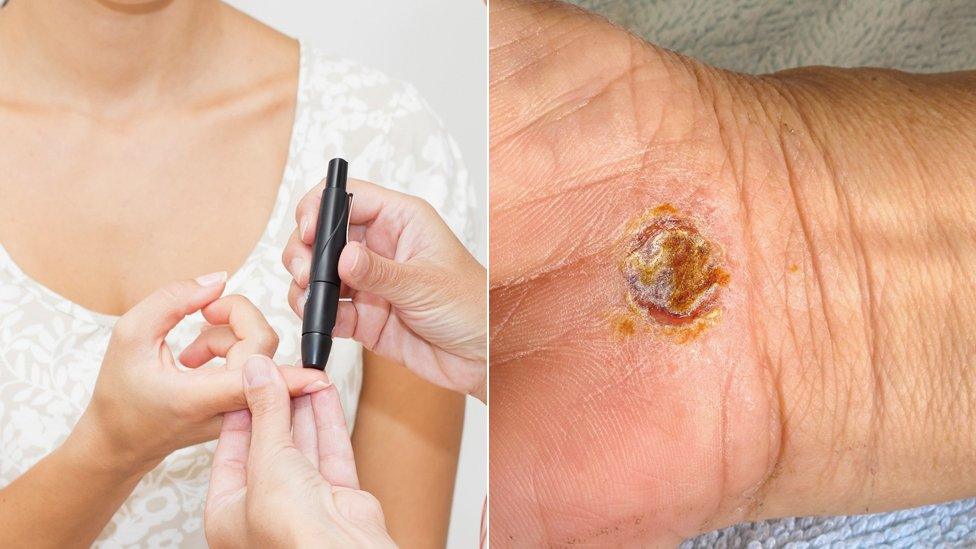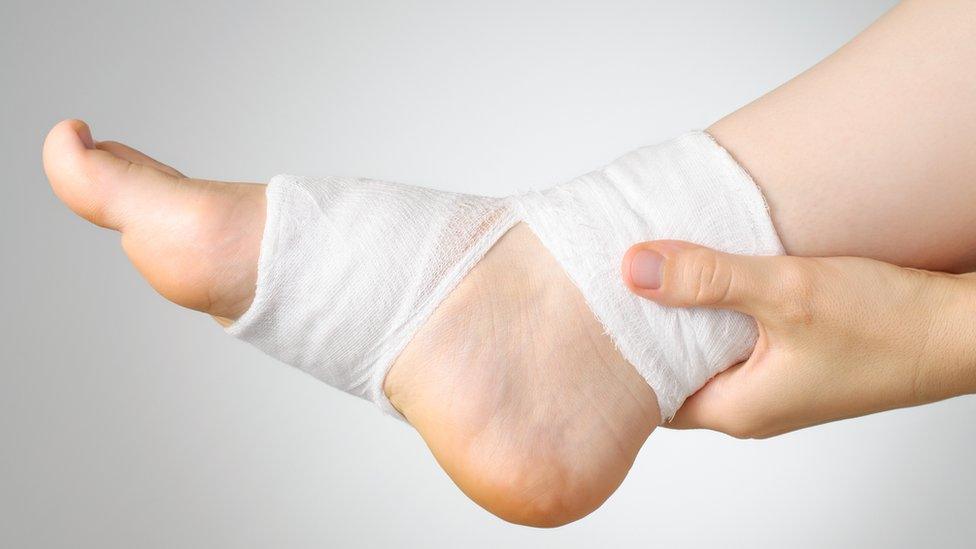Bangor University developing gel for chronic diabetic wounds
- Published

Welsh scientists are working on an injectable gel to help heal wounds for people with diabetes.
Diabetics' wounds, external can heal more slowly, worsen rapidly and can even lead to amputation, due to elevated blood glucose levels and poor circulation.
Bangor University hopes to create a cutting-edge polymer hydrogel to aid the recovery of such chronic wounds.
The School of Chemistry's Dr Hongyun Tai said it was a "very exciting project".
It is among hundreds of projects at Wales' eight universities which will benefit from £26m of European Union funding, as part of the The Knowledge Economy Skills Scholarships II (KESS II), external, led by Bangor University.
It is part funded by the Welsh Government's European Social Fund (ESF) convergence programme for West Wales and the Valleys.
Dr Tai said current gels on the market usually bond with the body's tissue, causing problems once the wound has healed.

'A potentially-serious condition'

Prof Dean Williams, of Bangor University's School of Medical Sciences, said the university has a particular interest in wound healing and managing people with diabetic foot disease.
He said: "Diabetic foot disease is a potentially serious condition. As the incidence of diabetes continues to increase, more people are presenting with diabetic foot disease.
"Foot ulcers in patients with diabetes can have a devastating impact on their quality of life, not just in the short term, that includes a reduction in mobility, inability to work and loss of limb.
"Foot-related problems are the commonest cause for hospital admission for people with diabetes.
"The development of a new dressing that has some of the key properties that we require will aid quicker ulcer healing, reduce their impact on quality of life and prevent amputations."

"When you remove that you will disturb the wound. It will cause damage, so it's not helpful for wound repair itself," she said.
"Our aim is to develop this hydrogel system that can degrade in situ over a required time."
She said chronic wounds can prove "very difficult" for people with diabetes, leading to reduced mobility and, in severe cases, the loss of part of the body.
There are 280 million cases of diabetes worldwide, with 25% of patients going on to develop diabetic ulcers. About 22% of these lead to lower extremity amputations, Dr Tai said.
The gel will contain bio-compatible polymers, including some which are polyester-based, which will also aim to tackle infections in the wound.
"They can hold water; they have similar properties as soft tissue. And, also, we can formulate gels with certain nutrition and drugs inside," Dr Tai said.
The project - a collaboration between the Schools of Chemistry and Medical Sciences - will see the researchers team up with a local company and a PHD student, funded by the European cash.
'Exciting' project helps diabetics heal
KESS II Wales manager Dr Penny Dowdney said, overall, the funding would create 650 fully-funded scholarships, including for PHDs and research masters, all in collaboration with local companies.
The first phase of KESS, announced in 2009, external, created 540 scholarships, leading to a 98% employment rate for students.
"Suddenly we had real insight into the employers' side of the equation," Dr Dowdney said. "Our researchers were able to see the application of their research - and for a PHD student, I think that's really beneficial."
She said the project was also contributing to the regional economy, with projects twinned with local commercial partners.